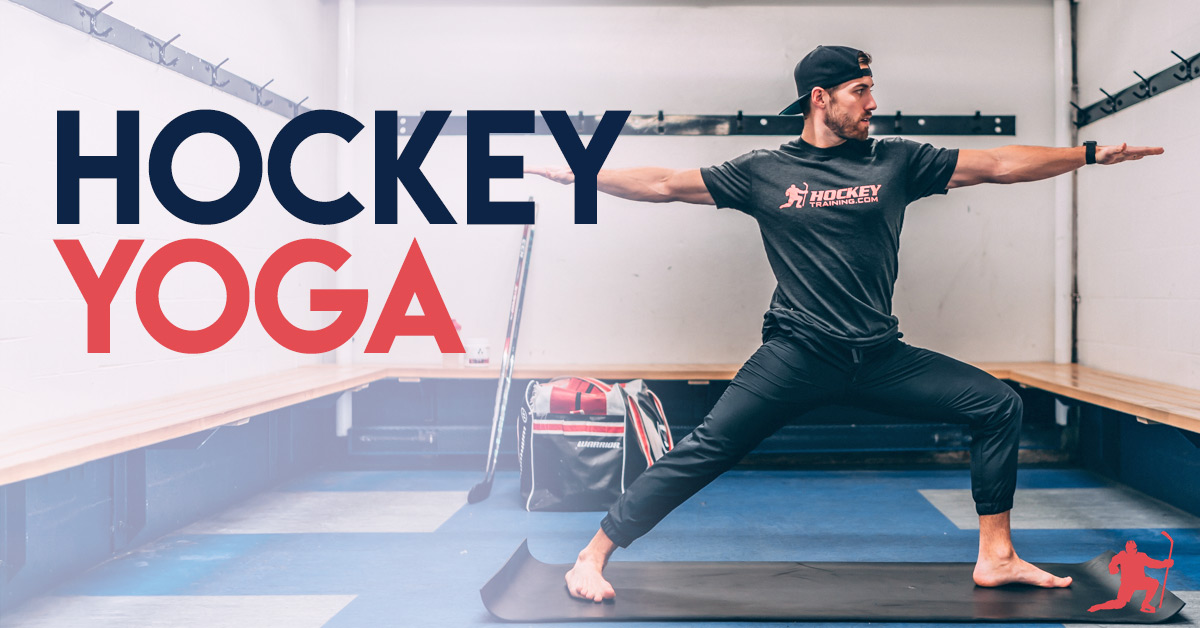The term “periodization” simply represents the process of organizing your training into phases. These phases are placed in a logical order for the purpose of optimizing your long-term hockey performance, avoiding psychological burnout, and preventing injury.
Single weeks of training are most often referred to as microcycles, and longer “blocks” of training are referred to as mesocycles, while the plan for the entire year (in-season + off-season) would be known as a macrocycle.
Periodization is a highly, highly complex topic that encompasses the manipulation of a wide range of training factors, including but not limited to:
- Volume
- Intensity
- Frequency
- Rep range
- Exercise selection
- Exercise order
- Rest intervals
- Deload periods
- Active rest periods
- Tapering and peaking phases
- Specificity of program design outputs
Among many other equally important factors. It is an irreplaceable, totally “make or break” component of your off-season programming that is relevant to hockey players of all levels. There are many different periodization models.
People who would consider themselves novice trainees in the gym likely will not need any strict periodization strategy as it won’t impact how much gains you make to any significant extent (newbie gains come no matter what you do).
But at a certain point, when you become an intermediate and/or advanced trainee, the organization of your hockey training becomes much more relevant and will make a difference in your long-term progression as a hockey athlete. The most popular periodization models are:
- Linear periodization
- Block periodization
- Undulating periodization
Full textbooks have been dedicated to periodization models, so I can’t go over all of them here with you today, nor do you need me to go over them all here with you today because hockey players won’t be using all of these models.
What’s most important for us to discuss right now is the difference between General Physical Preparation (GPP) and Specific Physical Preparation (SPP).
General Physical Preparation (GPP) vs. Specific Physical Preparation (SPP)
GPP is intended to provide balanced physical conditioning in endurance, strength, speed, flexibility and other basic factors of fitness, whereas SPP concentrates on exercises which are more specific to the particular sport, in this case, hockey.
For example, building up hockey athletes from the ground up with their GPP is nearly identical. They need to get strong, they need to get bigger, they need to have some mobility, and they should have a well-balanced approach to conditioning including aerobic, lactic, and alactic workouts.
This builds up what you could refer to as GPP, or, general fitness.
Once you have a good level of general fitness, now is the time to focus on more specific outputs in hockey.
For example, optimizing the stride length and stride frequency for your speed out on the ice.
Or, optimizing the explosive hip turning and shoulder flexion/extension for the slap shot.
Or, lower body horizontal power production for your explosive “starting speed” out on the ice… I think you’re getting the point.
In essence, GPP is an opportunity for individuals to participate in low-intensity movements that improve all-around conditioning.
This may include improving body composition by losing body fat or increasing functional lean body mass. Another benefit of using GPP is to teach basic concepts of hockey such as proper foot contact and correct foot and body positioning during different skill movements.
This will help the hockey athlete become more proficient when they perform their actual sporting movements out on the ice once the off-season is over.
SPP is a continuation of GPP, but with more of an intention on the actual sporting skills.
When used in the earlier phases, SPP can be helpful to correct past injuries, postural problems and improve neuromuscular skill. SPP can become more important as the athlete’s progress through several annual programs.
Once the individual has some experience within a system, more of the focus can be translated to SPP work as it allows the athlete to remain closer to the actual sporting performance physical characteristic qualities that you’re going to need out on the ice.
As stated plenty of times in my past blogs and videos, from an energy system perspective, I like to utilize tempo runs for aerobic GPP development.
From there, I have analyzed the needs of hockey from a physiological, kinetic, and bioenergetic perspective to know what we need to do to ultimately work my way from GPP into SPP when the hockey athletes are ready for it.
Example Hockey Off-Season Periodization (Schedule)
In the off-season, you need to focus on GPP early, and eventually work your way into SPP to get yourself ready for the competitive season, camps, and/or tryouts.
Here’s an example off-season periodization strategy.
GPP: Month 1
- Resistance training 3-5x per week with a focus on strength, hypertrophy, and fixing the common hockey structural imbalances
- Mobility sessions 1-2x per week
- Aerobic tempo running 3x per week
- Deload after 4 weeks (you can find more information on exactly how to deload here)
GPP: Month 2
- Resistance training 3-5x per week with a focus on strength, hypertrophy, and fixing the common structural imbalances
- Mobility sessions 1-2x per week
- Aerobic tempo running 2x per week
- Alactic conditioning session once per week
- Deload after 4 weeks
GPP: Month 3
- Resistance training 3-4x per week with a focus on strength and hypertrophy (structural issues are cleaned up by now so not as big of a focus on hypertrophy. Additionally, frequency has dropped down to 3-4x per week as we are adding in more hockey specific energy system conditioning to recover from)
- Mobility session 1-2x per week
- Aerobic tempo running once per week (at this point they have reached the baseline values I want them at—once per week is enough to maintain aerobic conditioning at this point, so we can put further efforts into anaerobic conditioning now)
- Alactic conditioning session twice per week
- Deload after 4 weeks
GPP Transitioning into SPP: Month 4
- Resistance training 3-4x per week focusing on strength and power (transitioning into more power output now so you can use your newfound muscle and strength faster out on the ice. Remember, power allows you to create forces faster. Hence, they are more related to SPP in hockey)
- Mobility sessions once per week as mobility goals have been achieved and can be easily maintained with once per week sessions to allow more time and energy to focus on SPP
- Aerobic tempo running once per week to maintain aerobic base
- Alactic conditioning session twice per week using a few more hockey specific exercises
- Deload after 4 weeks
SPP: Month 5
- Resistance training 3x per week with a heavy emphasis on relative strength, power, and speed of tempo
- 0-1 mobility sessions per week. Zero if the athlete has no problems, one if they still have those nagging joints/body parts that just don’t seem to loosen up unless they focus on them every week
- No more aerobic tempo sessions
- Alactic conditioning sessions are bumped up to three times per week now and heavily utilize hockey specific exercises (we can do three sessions now because we decreased our resistance training frequency), the degree of specificity/SPP is so high at this point that some of these workouts would preferably be performed on the ice
- Deload after 4 weeks
SPP: Month 6
- Two weeks of programming that look identical to the programming in week 5 with only slight adjustments to exercise selection and exercise order
- Two weeks of tapering and peaking prior to the start of the competitive season to maximize the fitness-fatigue model. Reduce all fatigue and heighten hockey specific fitness to the highest possible levels
Key Takeaways
What is most important here is that you see the overall periodized structure because that is what this blog is all about. Creating phases, not individual workouts.
Here’s the step-by-step process and what I want you to see and know:
- I assessed the GPP and SPP demands of hockey athletes
- I met the GPP demands in the beginning because those always come first, and I allotted enough time within these phases (four months) in order to accomplish these goals properly so that the hockey athlete has the proper foundation ahead of time to respond best to the SPP work
- I slowly transitioned into SPP when the time was right (and didn’t immediately jump into SPP!)
- I slowly transitioned from GPP (Phase 1-3), into a hybrid of GPP/SPP (Phase 4), and then ultimately into pure SPP to peak hockey performance (Phase 5-6)
- I did this over the course of an entire off-season. These things take time, the sooner you start your off-season, the better
Putting It All Together For You
We want to make this as easy as possible for you.
I have exact workouts and exact periodization models for your weight training, speed training, conditioning training, mobility, and fatigue management all covered under one roof in this year’s Off-Season Hockey Training Program.
Let me tell you something, the hardest worker is not always the one who gets the best results. It’s the athlete who is able to put that hard work into the most intelligent areas in the most intelligent periodization structure that is going to get the best results.
I have seen many hockey players work hard at the wrong stuff, and they might get better at that wrong stuff, but they don’t become better hockey players.
So if you want complete confidence that your efforts are going towards the most productive off-season possible for you this year, check out the Off-Season Domination program, I include different periodization models that make it work for anyone, anytime.










is running/jogging good for hockey
Yup, we use tempo runs for aerobic conditioning. You can learn more here: https://www.hockeytraining.com/conditioning/